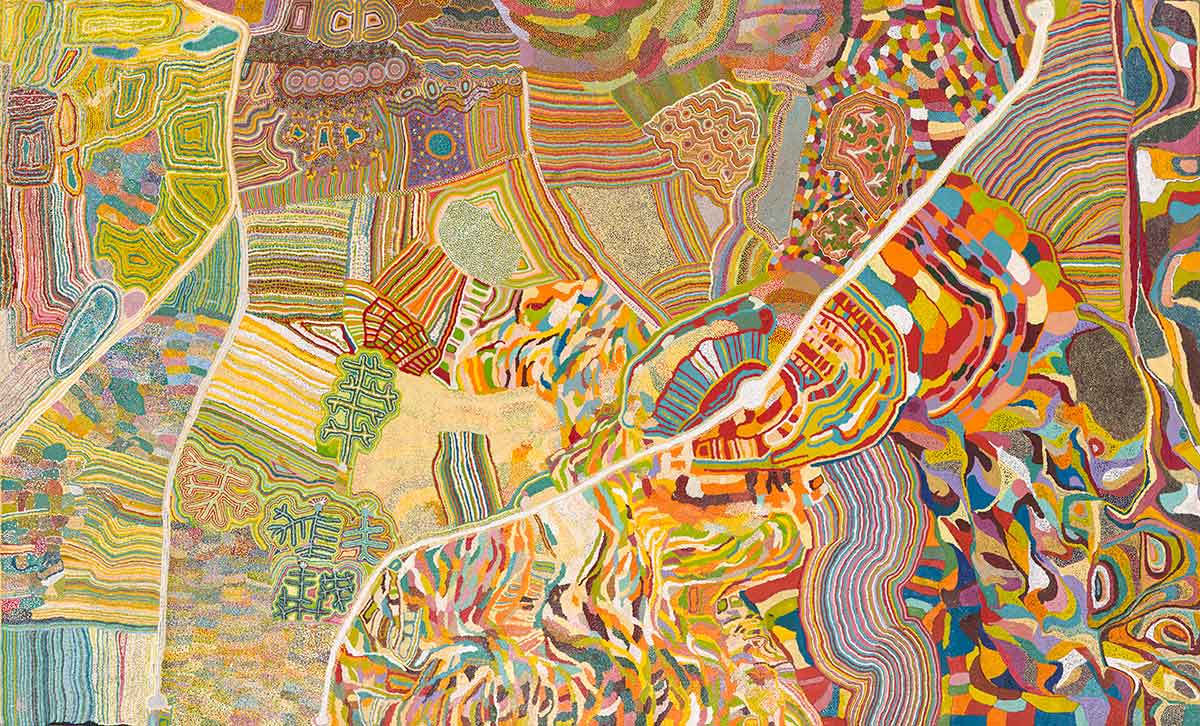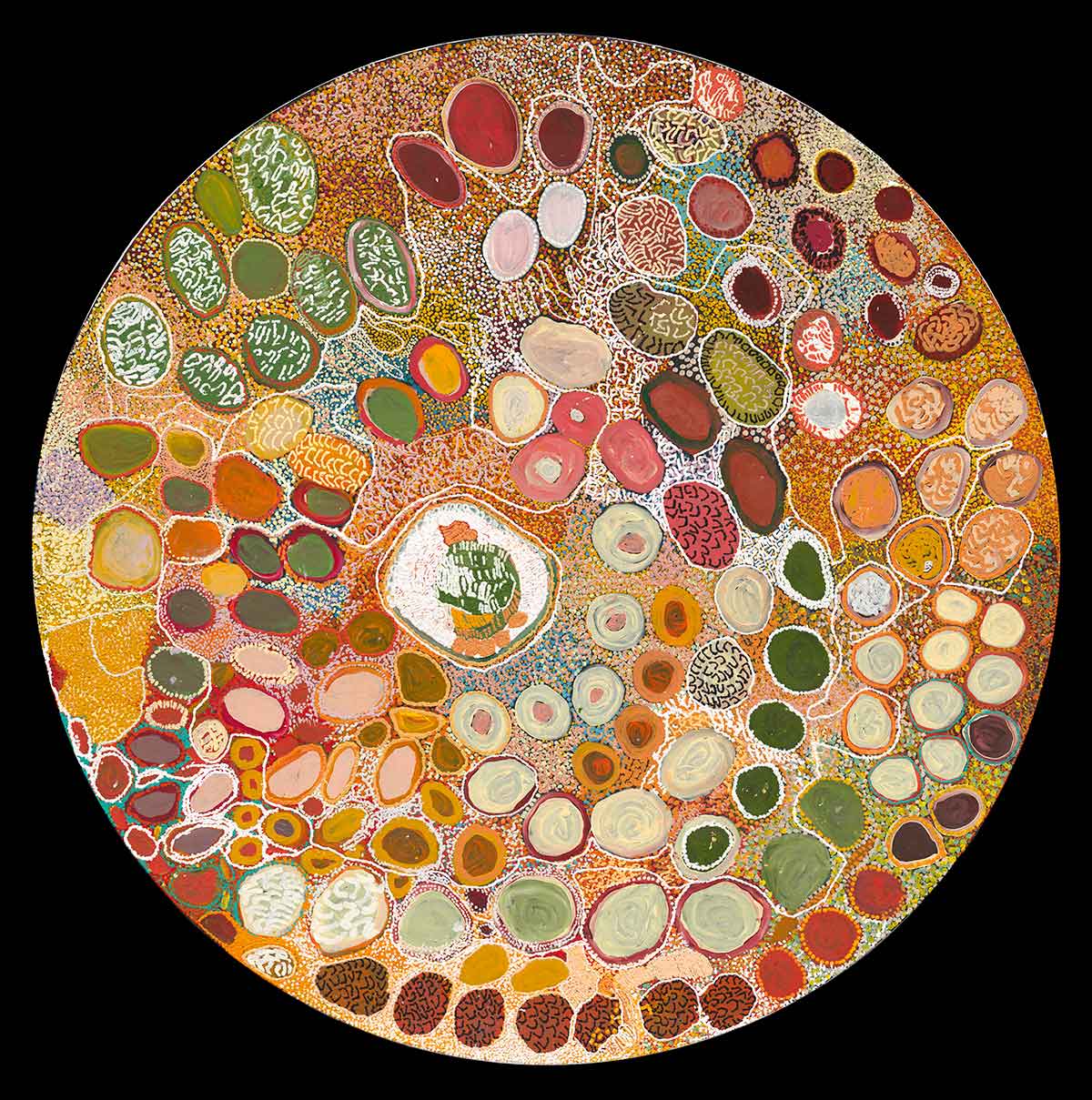Songlines: Tracking the Seven Sisters was an Aboriginal-led exhibition that took visitors on a journey along the epic Seven Sisters Dreaming tracks, through art, First Nations voices and innovative multimedia and other immersive displays.
Acknowledgements
Songlines curatorium
The curatorium comprised community nominated representatives with senior status from Martu country and Anangu Pitjantjatjara Yankunytjatjara (APY) and Ngaanyatjarra lands. They were not a reference or advisory group, but knowledge holders of the cultural material in this exhibition and directed its representation in collaboration with the Museum. A small group of spokespeople reported on matters concerning the wider group.
Major exhibition partner, elders and supporters
Thank you to our major exhibition partner The Scully Fund, Anangu Pitjantjatjara Yankunytjatjara (APY) elders and supporters, Ngaanyatjarra elders and supporters, and Martu elders and supporters.
Featured artworks

Yarrkalpa (Hunting Ground)
This encyclopaedic painting contains a nuanced knowledge of plants and animals, of seasons and fire, of permanent water and ephemeral soaks. It is also a topographic replica of the landscape around Parnngurr in Western Australia: ranges and sand-hills, creeks and rock holes. The Minyipuru (Seven Sisters) flit across the western side of the painting, pursued by the mischievous Yurla. Their presence in the painting is incidental, just one strand in the fabric of Martu daily life.

Minyipuru at Pangkal
The three Chapman sisters started this artwork on country after visiting Pangkal in Western Australian in 2016 with curators from the National Museum. They had not returned to Pangkal since the pujiman days, 50 years earlier, when they lived a traditional desert life without contact with white people. The power of the Jukurrpa (Dreaming) on country animated the story for the sisters, reflected in the scale, detail and energy of this circular work.
The exhibition took visitors on a journey across the Australian desert and featured an immersive 6-metre, state-of-the-art dome. Click here to watch the videos.
Featured artists
More than 100 artists are represented in Songlines. Learn more about the remarkable women who created the featured artworks above.
Editorial note and glossary
This website presents word forms, object titles, cultural affiliations and names as advised by the communities and individuals involved in the exhibition. For different language groups, variant spellings occur for similar words, cultural groups or names. The Museum acknowledges that some of the Ngaanyatjarra speakers in this book identify as coming from Ngaatjatjarra Lands.
Commonly used terms
inma for ceremony/ceremonial song and dance; Jukurrpa/Tjukurpa/Tjukurrpa for Dreaming; Kampukurta for the eldest sister; Minyipuru/Kungkarangkalpa/Kungkarrangkalpa for the Seven Sisters; ngurra/ngura for home, camp, traditional lands; pujiman for traditional bush/desert life; walka for design; Yurla/Wati Nyiru for the male Ancestral being who pursues the Seven Sisters.
Art centres
Maruku Arts, Minyma Kutjara Arts Project, Ninuku Arts, Papulankutja Artists, Spinifex Arts Project, Tjanpi Desert Weavers, Tjungu Palya Arts, Warakurna Artists, Warburton Arts Project


















